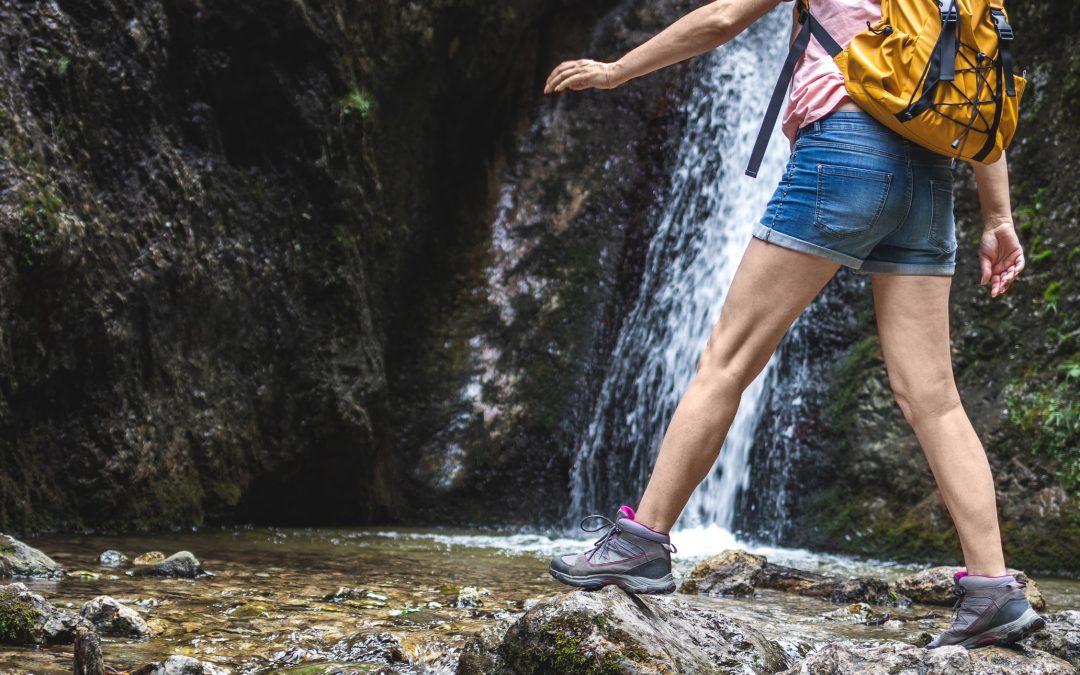Seasoned hikers know you should never skimp when it comes to hiking footwear—because no matter how beautiful the scenery, you won’t enjoy yourself if you’re battling blisters and sore feet. And if you’re trekking around puddles, hiking through the rainforest, or caught in an unexpected drizzle, not just any boots will do.
You’ll need a good pair of waterproof hiking boots to keep your feet dry and comfortable.
“When buying hiking boots, I always recommend paying the extra for waterproofing,” Cat Ekkelboom-White, a certified hiking guide in the Austrian Alps, tells SELF. “Sometimes all it takes is some morning dew on long grass for you to get wet feet. Having a fully waterproof boot means you can cross rivers, power through when it rains, and not worry about getting wet feet.” Once you invest in high-quality boots (and a good pair of hiking socks), you’ll be ready to hit the trail.
What to Look For In a Waterproof Hiking Boot
Waterproofing Mechanisms
Two key features make the best hiking boots truly waterproof. First, the interior of waterproof hiking boots usually features a membrane that’s designed to keep water out, while also letting your sweat evaporate. While Gore-Tex is the most well-known waterproofing, some brands, like Altra, use other materials like eVent.
Next, waterproof hiking boots also need to shed water from their exterior. To do this, brands incorporate materials like nubuck leather or a water-repellent coating like DWR.
It bears mentioning that waterproofing isn’t always a necessary—or helpful—feature: “A traditional waterproof boot will provide more protection from the elements but lacks breathability and takes a long time to dry if they get wet,” so it’s a trade-off, explains Lauren de Vega, a hiking guide for Another Summit and experienced thru-hiker who has backpacked over 15,000 miles. “Many hiking enthusiasts use a waterproof boot during winter and spring seasons, and a breathable trail shoe during the summer and fall.” In other words, leave room in your gear closet for non-waterproof hiking boots, approach shoes, or even trail runners.
Fit and Support
Sadly, there’s no one-size-fits-all hiking boot, as every hiker has a different foot shape and preference, but there are a few general criteria to keep in mind while shopping. Hikes should look for a boot that’s “snug yet roomy around the toes to allow for some light movement in the hiking shoe,” explains New York City–based podiatrist Neyla Lobkova, DPM. Too tight a fit and your toes will hit the end of the toe box as they slide forward on steep descents. Too loose and your foot will rub against the boot fabric, causing blisters and hot spots.
You should also find a boot with a secure ankle cuff, Ekkelboom-White says. The ideal boot will “hold your foot in a stable position with no heel-lift when you step, and no pressure points.” Some hikers will require more ankle support than others, so if in doubt, check with a podiatrist before you start shopping.

